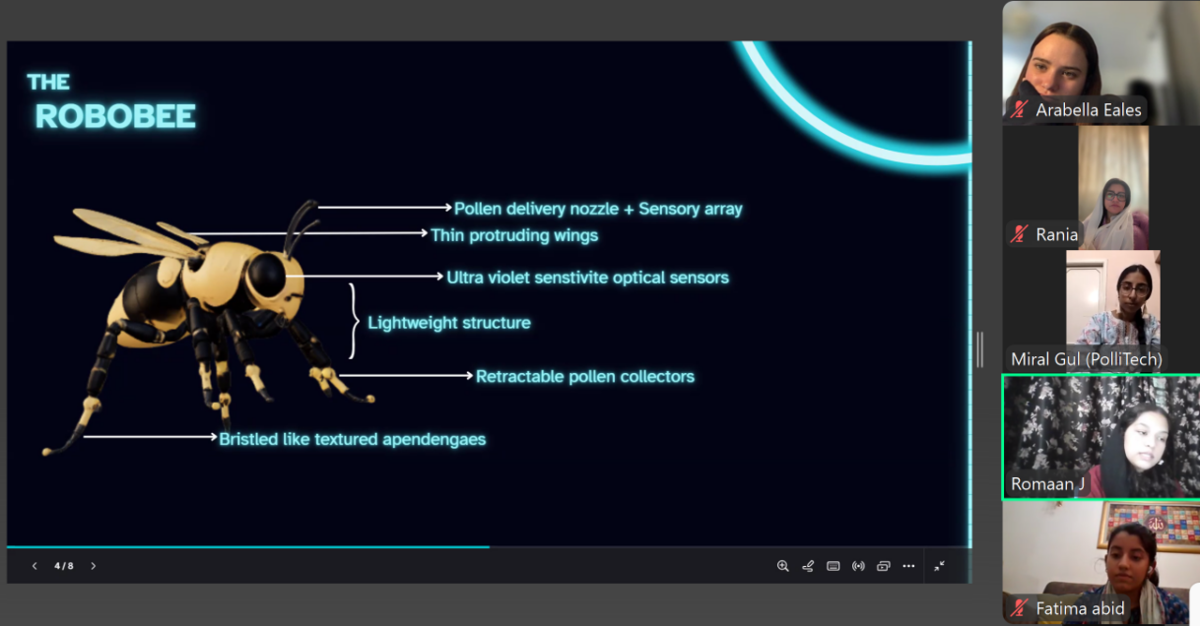Budget Statement 2023: is the scrapping of the apprenticeship levy on the cards?

As Treasury officials work hard to prepare the Chancellor’s Budget Statement, speculation continues about the future of the UK-wide apprenticeship levy. Prof. Tom Bewick explains some of the main policy options available. One of them is doing away with the unpopular payroll tax altogether.
To think, it was a Conservative Government that first introduced the equivalent of a compulsory payroll tax, in 2017, to fund UK-wide apprenticeship training.
In England, the fund raises £2.5 billion per annum, drawn down by around 120,000 companies in government provided digital accounts.
Unlike crypto-currencies, firms cannot spend their ‘digital monies’ on anything they like. It has to be spent on the apprenticeship ‘products’ approved by a quango – the Institute for Apprenticeships and Technical Education (IfATE).
These products come in the form of occupational standards, a key component of a formal apprenticeship, with more than 600 approved for the regulated market at the last count. In the early days of the levy pot being raised, about a fifth (£424 million) was returned to the Treasury unspent.
In the last fiscal year, this underspend had been significantly reduced to less than half a per cent of the total budget, or £11 million.
Levy Flexibility
Ministers claim this reduction in underspend shows the levy is working as broadly intended. Other business lobby groups disagree, arguing the scheme lacks ‘flexibility’, holding firms back from investing in the skills they specifically need in a historically tight labour market.
The opposition Labour party, meanwhile, appears to agree with the business lobby, saying it would adopt a broader ‘growth and skills levy’ on winning power at the next general election.
Only 2 per cent of British companies pay into the fund (with payroll bills of more than £3 million per annum), with the majority of small firms exempt from paying in anything at all. Perhaps not surprisingly, it has been the bigger companies, including employer groups like the CBI, who have been the most vocal in calling for change.
There are many different accounts of how and why the apprenticeship levy came about.
Apprenticeship Levy: A flawed design from the start?
Some commentators credit Baroness Alison Wolf, a current post-16 skills adviser to prime minister Rishi Sunak, as the main architect. Others award the accolade to Nick Boles, the estranged former Conservative MP who was skills minister during the critical period of the policy’s gestation, when David Cameron was still prime minister.
Whoever was the main policy instigator, it is more probable than not that austerity was really the main driver behind these reforms. It helped the exchequer seemingly save money on its ‘bottom-line’, in what some chief financial officers might recognise as a very neat accounting trick.
Officials like to paint the levy as a major innovation. In reality, the levy is just a substitute way of contributing to general taxation, without the burden falling on every single company having to pay it.
The innovative part – digital accounts – comes in the form of employers being able to have a modicum of ‘direct purchasing power’ in deciding what apprenticeships they would like to fund, which didn’t exist previously.
It’s a bit of a stretch, however, as some commentators and officials like to present, that the levy is ‘demand-led’, based on the needs of employers.
Like our whole skills ecosystem, the levy is ‘technocrat-led’
It is based on the needs and priorities of civil servants in Whitehall. The ‘employer-led’ piece is a veneer of bureaucratic groups, with some employer reps sitting on them. If the skills system was truly employer-led, it would not sit wholly in the public sector.
Moreover, if the apprenticeship levy was operating like a proper hypothecated tax, as in the case of the BBC licence fee, the monies collected would be under the direct control and supervision of a body completely independent of government.
IfATE is directly accountable to the Department for Education, not British industry.
It won’t stop policymakers giving the appearance of a specific fund levied for a specific purpose. In fact, like the mythical national insurance contributions (NICs) fund that doesn’t really exist, the apprenticeship levy is no different.
All these payroll collections go straight into a single exchequer pot. Treasury officials, with the chancellor, decide public expenditure priorities in the round, on an annual or multi-annual basis (e.g. as in the case of comprehensive spending reviews).
In other words, the Department for Education has a cash-limited budget for apprenticeships handed to it each year, regardless of what the levy collects via taxation.
From a technical point of view, this is where you need to know your DEL (departmental expenditure limit) from your AME (annual managed expenditure). The former refers to a fixed budget that the department has no authorisation to exceed. The latter is a budget that inevitably will fluctuate with the fortunes of the wider economy or other demographic shifts (e.g. pensions and social security payments).
What we spend on apprenticeships in England each year (£2.5 billion) is classified as DEL.
The Department for Education is therefore obliged to hand back to Treasury any underspends of the budget it was given. Crucially, this also means it is not authorised to exceed the budget given without prior approval. All this operates outside the financial mechanism HMRC has used to collect the funds from the firms’ PAYE accounts that fall within scope to pay it.
In plain English, that means the levy is no more than a financial mirage, an illusion
If the Treasury decided to operate an AME-type budget with the Department for Education, in future, then it wouldn’t really matter how much monies was going towards apprenticeships, since this would depend on the uptake amongst employers in any particular year.
In a key sense, the budget would become more demand-led; although it would give ministers a lot less direct control on how much money was spent.
It’s one of the main reasons why NHS Trusts routinely overspend and exceed budget limits, because public healthcare can only be rationed up to a point. Healthcare providers may plan for a given number of A&E trauma operations each year, but the actual amount conducted, will be shaped by a number of uncontrollable events, including the volume of serious road traffic accidents in the local area.
Derived from skills demand (not supply)
Apprenticeship numbers are no different. They are derived from skills demand (not supply) in the real economy. Heading into a recession we can expect cyclical demand to decline, as is already starting to show up in the overall apprenticeship starts figures.
By looking at all the potential options now facing the chancellor, this basic understanding of public expenditure needs to be better understood. The Treasury’s primary role is to ‘control’ public expenditure.
Who has the real power over the purse strings will be a primary motivating force in how schemes are devised and delivered by government (spending) departments.
Let’s look at the main options for the apprenticeship levy, in advance of the Budget to be announced by the chancellor, Jeremy Hunt, on 15th March.
Status quo
Despite Rishi Sunak, as chancellor last spring, announcing a ‘review’ of the levy (which was later peddled back on by officials), Hunt could decide to do nothing at all.
After all, the devolved administrations are hardly calling for radical change. They receive a proportion of the levy top-sliced in the form of a block grant. Similarly, provider voices in the FE sector appear broadly happy with its current operation.
Those on the register of training providers – called RoATP – would certainly not want to see major changes to a UK-wide levy fund that guarantees over £3 billion worth of business each year exclusively for them.
If the chancellor were to widen the use of the levy, without protecting the part spent on apprenticeships, it would mean potentially fewer apprenticeship opportunities and certainly less money for organisations on RoATP.
It’s one of the key reasons some bodies in the FE sector oppose the creation of a wider ‘skills levy’. Because potentially other market entrants would be allowed to come in.
Abolition of the levy all together
This option is not as unlikely as it sounds. As discussed above, the way the current levy is collected and operates, in practice, is no different from general taxation.
If anything, the levy adds to a political headache for the government at a time of high individual taxes and burdens on business. In April, the tax burden on business is set to increase significantly with a planned rise in corporation tax from 19% to 25%.
If this happens, almost overnight the UK will go from being one of the most competitive jurisdictions for corporate tax competitiveness in the OECD, to a median performer.
Such is the political sensitivity of the planned hike, that already we’ve seen the fallout of US company Pfizer’s recent decision to locate the world’s biggest pharmaceutical laboratory to the Republic of Ireland, with its low 12.5% corporation tax rate.
Hunt could start to fulfil his promise to ‘reduce the burden’ of taxation on business, something he has publicly said is a priority, by abolishing the apprenticeship levy.
Instead, he could fill the revenue shortfall in apprenticeship funding by saying to business they can fund placements by deducting the cost from corporation tax liabilities.
Companies would still be able to purchase the training via their HMRC secure digital accounts, with all the eligible amounts spent, simply deducted from their corporate tax liability.
Organisations in the public sector and charities, who do not pay corporation tax, would receive a funding credit / or grant paid direct into their digital accounts, i.e. to spend towards the cost of apprenticeship training. This budget would form part of the DEL agreed with the Department for Education and the devolved administrations.
Lessons from Australia
In policy terms, this is similar to what a Conservative government in Australia did in the mid-1990s. The apprenticeship levy that operated under the Australian Training Guarantee Scheme (ATGS) was deeply unpopular with business and was perceived as ‘just another payroll tax’, paid by large enterprises. It was abolished in 1996.
The federal government moved to a system funded out of general taxation, with market based reforms and other fiscal measures to better target and incentivise apprenticeship starts. Various evaluations conducted of the scheme were sympathetic to some of the aims of ATGS, but found that apprenticeship training actually increased over the decade when a specific levy no longer operated.
Could this be one of Hunt’s eye-catching decisions on 15th March? Abolition of a disliked payroll tax, while still ensuring future investment in apprenticeship?
Extend the scope
The argument for extending the scope of the levy is really tied up in broader concerns about poor productivity in Britain.
In a nutshell, the UK’s labour market has been successful at adding net jobs to the economy over the past two decades, but rather lousy at getting more out of those workers in terms of output per hour worked.
In more common parlance, it’s like inviting more people to a wedding reception party (i.e. by adding to your national population) without increasing the size of the wedding cake (i.e. by increasing the amount of economic prosperity that can be shared around).
In Britain, since 2008, we’ve struggled to grow the size of the cake. Simply adding more workers, which can add to national income, has meant in GDP per capita terms, a less than flattering slice of the cake for everyone.
Getting more people to the wedding party may sound like a great idea, but not if they fail to pay their way at the bar or there is not enough cake to go round.
It’s why economists talk about another decade of stagnation, where real terms increases in wages are hard to come by. The only way to fix that conundrum is through much higher levels of productivity (and growing the size of the cake we consume).
Higher Skills = Higher Pay = Higher Economic Growth
= i.e. more money in peoples’ pockets (real wages) and more funds for government to splurge on public services (education, health, transport etc.)
Better investment in skills are a key determinant of productivity. Since 2005, employer investment in training has reduced by 23%, nearly a quarter reduction in spend according to the Labour Force Survey (LFS).
Doug McWilliams of the Centre for Economics and Business Research has calculated that public sector productivity decreased by 7.4% since the start of the pandemic, compared to a sluggish 1.6% increase across the economy as a whole. It’s the equivalent of a ‘hit’ to public expenditure of £73 billion per annum.
Poor productivity on this scale is a lot more than the £53.7 billion the Department for Education will spend this year. So, closing the productivity gap could help provide the additional funds the FE sector is currently campaigning for.
Advocates for the extension of the levy’s scope argue that increasing the 0.5% rate for existing payers, or increasing the number of firms liable for the charge, could act as a compensatory measure for the fact employers are clearly spending not as much on workforce training as they used to.
If the Treasury was simply looking to use the levy to make up for this investment shortfall, based on LFS data, the pot would have to raise at least another £5 billion per annum.
But would it solve the productivity puzzle?
The problem with this option is probably more political than operational. Why would a government already under a lot of pressure about the ‘highest tax burden in peacetime history’, make announcements to ‘extend the scope’ that appear to increase the tax burden on businesses still further?
It’s also very doubtful whether raising more in levy funds would be efficiently targeted on skills that increase productivity.
‘Recalibrate existing’ financial incentives
‘Recalibration’ of the existing levy pot appeared to be where the Treasury was headed at the time of the last Budget.
Talking privately to Treasury sources last year, I was told by at least one senior civil servant of a desire amongst officials to restrict levy spend on higher level (L6 and L7) apprenticeships, encouraging employers to invest more in entry-level apprenticeships and the under-25s.
There were all sorts of technocratic ways, I was told, that a ‘recalibration’ could be achieved; including placing a salary cap on existing employee apprentices; or shifting the cost of the L5 and above apprenticeship standards to the HE student financial system. At the moment, degree apprenticeship costs are met from the levy pot not the HE loans budget.
£3000 bursaries for care leavers
We’ve seen some evidence of this recalibration of incentives already, for example, with the recent announcement of the £3000 bursaries for care leavers.
Whether you agree with recalibration or not, some tweaking of how and what the levy pot can be spent on is bound to appeal to policymakers more concerned about apprenticeship investments being made in the ‘right kinds of training’.
And with a general election looming, including concerns about a ‘middle-class grab on apprenticeships’, you can bet policymakers will start to become more sensitised to accusations that the way the current levy operates, is far too loaded towards higher-level existing employees, who the evidence shows already do quite well out of general workforce training.
A broader-based skills levy?
The option that is being hotly debated the most outside of government at the moment, is the idea of converting the existing levy to a broader-based ‘skills levy’.
Employer groups argue this approach is the best way to ensure skills gaps and shortages are addressed in a post-Brexit, post-pandemic economy, where labour supply has taken a huge supply-side shock.
Over 50s have been retiring in record numbers. In some low-paid sectors, like social care and hospitality, EU workers are no longer on tap in quite the unregulated way that freedom of movement – when the UK was a member of the EU – once provided.
Published leaks from the Treasury suggests that the chancellor is perhaps considering a more flexible approach to apprenticeship training for the over-50s, by allowing a much shorter course duration of the scheme.
The main problem with the proposal is that formal apprenticeships have a legally protected duration of one year. And very few in the sector, from a quality perspective, want to go back to the bad old days when supermarkets could decide a few weeks of shelf-stacking added up to an ‘apprenticeship’.
Trashing the integrity of the apprenticeship brand seems like an odd way to tackle a highly specific issue of over-50s retiring early.
According to recent research commissioned by City & Guilds, 96% of HR leaders in levy paying companies would like to see changes made to the scheme.
Of the 1000 companies involved in the study:
- 18% said that access to funding involved too much bureaucracy or administration;
- 17% said they didn’t have enough time to invest in the system;
- 19% said that they can’t commit to the length of time that an apprenticeship takes to complete. (The legal minimum duration is one year).
The findings come at a time when the Labour party is looking to present a more business friendly environment, as it campaigns to win the next election.
Sir Keir Starmer has made no secret of the ‘growth and skills levy’ his party is planning to adopt, saying to the conference faithful in Liverpool 2022:
“Labour will give employers new flexibility to invest in the world class training they need. Businesses want high skills, workers want skills training when they need it. We will see the biggest partnership between government, business and communities this country has ever seen.”
Where is the chancellor likely to go next?
All this leaves the chancellor, Jeremy Hunt, in a bit of a quandary. Saying he is content with the status quo will come across as being tin eared and obstinate.
Extending the scope of the levy risks political accusations of piling on the misery of taxation, at a time when most businesses are clearly struggling.
Making the existing levy more ‘flexible’ will be popular among many lobby groups, although politically, will result in goading from Labour that the government has simply stolen their big idea.
Ironically, the boldest political move the chancellor could make on 15th March – and don’t think it can’t happen – would be to scrap the levy altogether. That’s what the Conservatives looking to win an election in Australia pledged to do in the early 1990s, which proved extremely successful.
As long as companies are still able to invest in the apprenticeship scheme via tax breaks and perhaps improved financial incentives, Jeremy Hunt could vanquish all his enemies in a single stroke.
He could wrong foot his opponents on a policy that only really came into being because a political adviser and a former skills minister were scrambling around in 2015, to find ideas for those writing the then Tory party election manifesto.
Whatever the future the of the apprenticeship levy, it’s not long now until the actual Budget, when we will all find out.












Responses